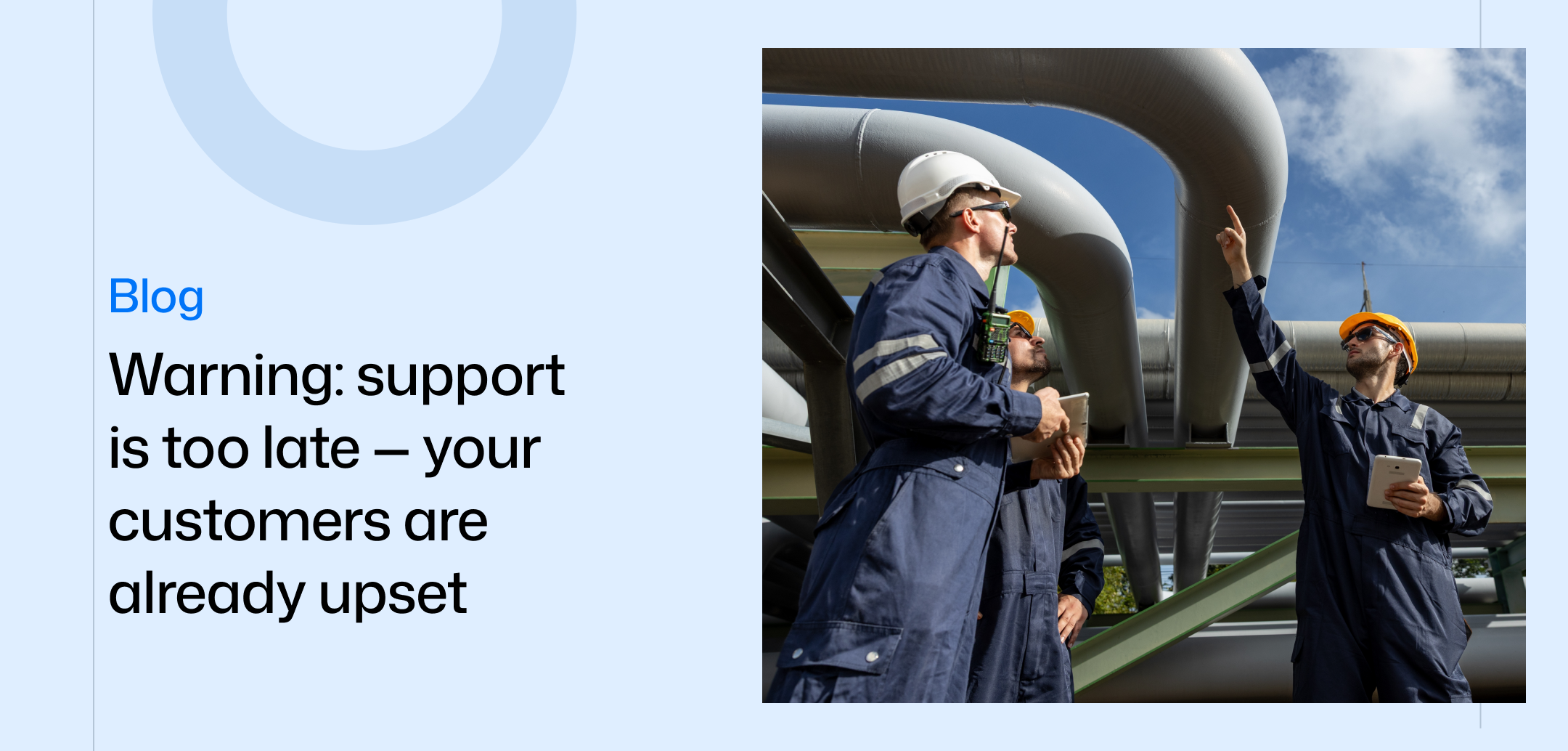
.svg)
Intro: By the time support gets there, the damage is already done.
You know the story.
She calls, your customer who’s hanging by a final thread.
Furious.
Your field tech is stranded, waiting for direction. And your support team? Still piecing together what happened three time zones away.
By the time the right expert logs in or the right form arrives, the customer’s trust — and sometimes the contract — is already gone.
In Oil & Gas, where downtime costs tens of thousands per hour, “reactive” isn’t a strategy. It’s an expensive bad habit.
The real problem isn’t your people — it’s your timing.
Here’s the dirty secret: most Oil & Gas operators do have support systems in place.
They just weren’t designed for the speed or complexity of today’s operations.
- Ticket-based workflows slow everything down.
- Communication happens in silos — email, phone, chat, spreadsheets.
- By the time an issue is escalated, the fix is too late to prevent customer impact.
One study found that 63% of customer escalations could’ve been prevented if the frontline had access to real-time help.
That means the majority of your “urgent” problems were actually predictable — you just couldn’t see them coming.
Reactive support is a symptom — not the disease.
When we peel back the layers of late support, here’s what we see every time:
- No live visibility. HQ doesn’t know what’s happening in the field until after it fails.
- No context. Support receives incomplete information — no timestamps, photos, or SOP tracking.
- No feedback loop. Lessons learned in the field never make it back into process improvements.
You can’t fix what you can’t see.
And when your only insight comes after the customer is already angry, you’re not managing — you’re firefighting.
What real-time support looks like.
Imagine if your field teams didn’t have to wait.
When an issue appears, support sees it instantly.
They get annotated photos, video, and live task data — not vague updates like “it’s not working.”
They can guide the technician in the moment, not after the fact.
That’s what happens when support moves into the workflow, not after it.
With real-time task validation and escalation, Atheer makes help part of the process — not a separate system.
- Technicians flag issues directly from their task.
- Support sees the exact context (step, timestamp, environment).
- Experts can jump in live, resolving before the customer even knows there’s a problem.
That’s not reactive support. That’s proactive trust.
The ROI of instant visibility.
One global Oil & Gas operator using Atheer saw:
- 43% reduction in customer escalations within six months
- 56% faster resolution times thanks to in-task context and proof
- Improved SLA compliance and a 2-point increase in NPS
Those aren’t just performance stats. They’re retention metrics.
Because when your customers feel seen before they feel ignored, loyalty follows.
Why this matters now.
The next generation of Oil & Gas operations won’t be defined by who has the biggest rigs or the fastest network — it’ll be defined by who can respond first and fix before failure.
If your support model still depends on tickets, phone calls, and guesswork, you’re already behind.
It’s time to bring your support in-line with execution — where problems are caught, resolved, and recorded in real time.
Get real-time support — before it escalates
Get a demoSimplify your service operations.
Discover how Atheer can streamline your service network operations and help you deliver a superior customer experience.
Get a demo















%201%20(1).svg)
.svg)












.png)
.png)
.png)






